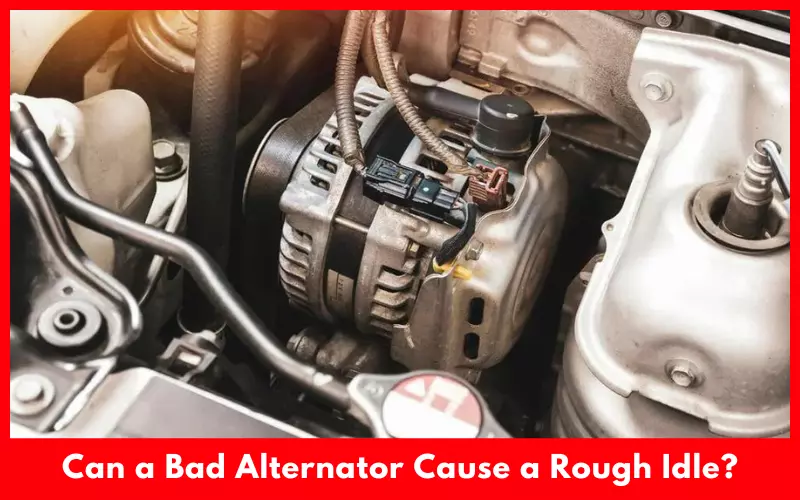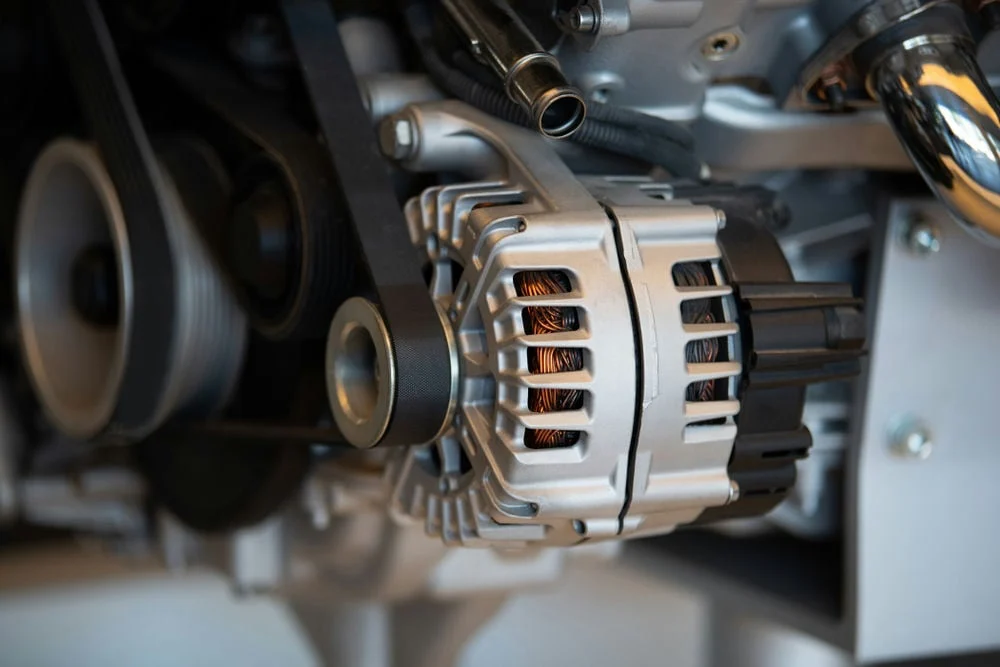


A rough idle can be an annoying and concerning issue, often indicating underlying problems with your vehicle's electrical system or engine. One of the most common culprits behind this issue is a failing alternator. Let's explore how a malfunctioning alternator can lead to rough idling and what you can do to address it.
First, let's understand the alternator's role in your vehicle's electrical system.
| Component | Function |
|---|---|
| Alternator | Generates electrical power to charge the battery and power electrical components |
| Battery | Stores electrical energy and provides power for starting the engine and accessories |
| Engine Control Module (ECM) | Manages and regulates the engine's operation, including idle quality |
The alternator is a crucial component that converts mechanical energy from the engine's rotation into electrical energy. This electrical energy is used to charge the battery and power various electrical components and accessories in the vehicle.

When the alternator fails, it can lead to several symptoms:
Dimming headlights when idling or using electrical accessories
Battery warning light illuminated on the dashboard
Battery discharging quickly
Difficulty starting the engine
These symptoms occur because a faulty alternator cannot:
Charge the battery properly
Maintain a consistent voltage supply to the electrical system
This inconsistent voltage supply can confuse the Engine Control Module (ECM), causing it to misfire or run erratically, resulting in a rough idle.
Additionally, when electrical accessories like headlights or the blower motor are turned on, they increase the electrical load on the system. If the alternator cannot keep up with this increased demand, it can further drain the battery, leading to voltage drops that disrupt the idle quality.
| Alternator Condition | Effect on Idle |
|---|---|
| Functioning properly | Smooth, consistent idle |
| Failing or faulty | Rough, erratic idle |
Diagnosing alternator issues typically involves:
Testing the alternator's output voltage with a multimeter
Performing a load test to check if the alternator can maintain voltage under load
Inspecting the alternator's components, such as:
Belt condition and tension
Wiring and connections
Mounting and pulley
If the alternator is found to be faulty, it needs to be replaced with the correct replacement part for your vehicle's make, model, and year. The replacement process involves:
Removing the old alternator
Installing the new alternator
Adjusting the belt tension
Checking the charging voltage
Regular maintenance can help prevent alternator issues:
Routine battery and charging system tests
Inspecting belts and tensioners
Keeping electrical connections clean and free from corrosion
By understanding the alternator's role, recognizing the symptoms of a failing alternator, and following proper diagnostic and replacement procedures, you can address rough idling and ensure a smooth and reliable driving experience.
Remember, a well-functioning alternator is essential for maintaining a stable electrical system and optimal engine performance in your vehicle. Addressing any issues promptly can prevent more severe problems and costly repairs down the line.
The main symptoms of a failing alternator include dimming headlights when idling or using electrical accessories, the battery warning light illuminated on the dashboard, the battery discharging quickly, and difficulty starting the engine.
A faulty alternator cannot maintain a consistent voltage supply to the electrical system, which can confuse the Engine Control Module (ECM), causing it to misfire or run erratically, resulting in a rough idle.
The alternator's role is to generate electrical power to charge the battery and power various electrical components and accessories in the vehicle.
Diagnosing alternator issues typically involves testing the alternator's output voltage with a multimeter, performing a load test to check if the alternator can maintain voltage under load, and inspecting the alternator's components, such as the belt condition, wiring, and mounting.
The steps involved in replacing a faulty alternator include removing the old alternator, installing the new alternator, adjusting the belt tension, and checking the charging voltage.
Regular maintenance, such as routine battery and charging system tests, inspecting belts and tensioners, and keeping electrical connections clean and free from corrosion, can help prevent alternator issues.
A functioning alternator ensures a smooth and consistent idle quality, while a failing or faulty alternator can cause a rough and erratic idle.
When electrical accessories are turned on, they increase the electrical load on the system. If the faulty alternator cannot keep up with this increased demand, it can further drain the battery, leading to voltage drops that disrupt the idle quality.
It is important to use the correct replacement alternator for your vehicle's make, model, and year to ensure proper fit, compatibility, and optimal performance.
A faulty alternator cannot charge the battery properly, leading to a discharged battery and difficulty starting the engine.

Miguel started tinkering with car radios as a teenager, fascinated by the intricate dance of wires and circuits. This passion led him to pursue a career as an automotive electrician. For the past 10 years, Miguel has tackled everything from flickering headlights to mysterious electrical gremlins. He thrives on troubleshooting electrical problems and enjoys sharing his knowledge to empower car owners to understand their vehicles better.



